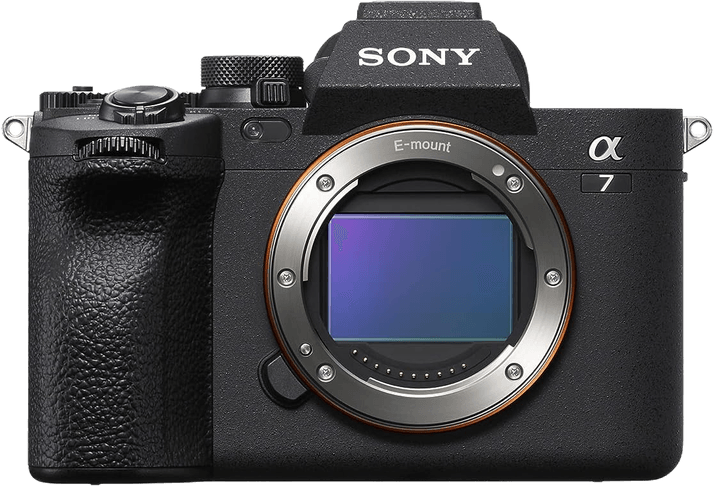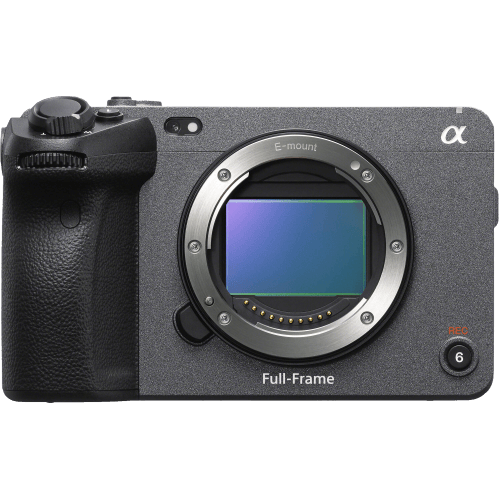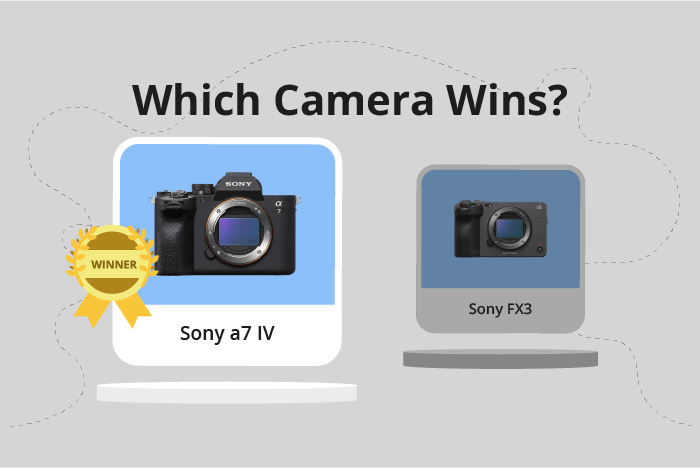Sony a7 IV vs Sony FX3 Comparison
Sony a7 IV

Sony FX3

The Sony a7 IV emerges as the winner with a score of 84/100, while the Sony FX3 trails behind at 75/100. Both cameras are mirrorless and were released in 2021, with the a7 IV announced on 10/21 and the FX3 on 02/23. They share similar dimensions, with the a7 IV measuring 131 x 96 x 80mm and the FX3 at 129.7 x 77.8 x 84.5mm. The FX3 is slightly lighter at 640g, compared to the a7 IV’s 659g.
The a7 IV outshines the FX3 due to its superior performance and more affordable launch price of $2499, compared to the FX3’s $3900. Although the FX3 has a slightly smaller and lighter body, the difference is minimal and doesn’t provide a significant advantage over the a7 IV.
Considering their scores and specifications, the Sony a7 IV is the better choice for most users, offering a balance of performance, size, and affordability. The Sony FX3, while still a solid camera, may not be worth the higher price for those seeking a more budget-friendly option.
Sony a7 IV vs Sony FX3 Overview and Optics
The Sony a7 IV emerges as the winner in the optics category, scoring 85 out of 100 points, while the Sony FX3 scores 71 points. Both cameras share several specifications, including a 10 fps shooting speed, CMOS sensor, Bionz XR processor, full-frame sensor size, Sony lens mounts, and image stabilization. However, the a7 IV outperforms the FX3 in certain aspects, making it the superior choice in terms of optics.
The a7 IV has a higher megapixel count at 33, compared to the FX3’s 12.1 megapixels. This difference results in the a7 IV producing higher resolution images, providing more detail and better image quality. Additionally, the a7 IV boasts a higher DXOMARK score for its sensor at 97, compared to the FX3’s 94. This higher score indicates that the a7 IV’s sensor performs better in terms of color depth, dynamic range, and low-light performance.
The FX3, on the other hand, does not excel in any specific optical aspect compared to the a7 IV. Its lower megapixel count and DXOMARK sensor score make it less suitable for capturing detailed images and performing well in challenging lighting conditions.
Given the comparison, the Sony a7 IV is the superior choice for photographers seeking better image quality and performance. Its higher megapixel count and sensor score provide advantages in terms of resolution, color depth, dynamic range, and low-light capabilities. The Sony FX3, while still a capable camera, falls short in these areas, making it a less optimal choice for photographers prioritizing optical performance.
Sony a7 IV vs Sony FX3 Video Performance
The Sony a7 IV and Sony FX3 both have a video score of 91/100, making them equally impressive in terms of video capabilities. They share several key specifications, including a maximum video resolution of 4K, maximum video dimensions of 3840 x 2160, a maximum video frame rate of 120fps, and built-in time-lapse functionality.
Despite having the same video score, the Sony a7 IV has some advantages over the Sony FX3. The a7 IV is a hybrid camera, making it suitable for both photography and videography. This versatility allows users to capture stunning images and videos without needing to switch between multiple devices. The a7 IV also features a more compact and lightweight design, making it easier to carry and handle during extended shooting sessions.
On the other hand, the Sony FX3 is specifically designed for video production, offering some benefits not found in the a7 IV. The FX3 has a more durable build, making it better suited for professional environments and challenging conditions. Additionally, the FX3 features more advanced video recording options, such as S-Cinetone color science and enhanced audio capabilities, which can result in more cinematic and professional-looking footage.
Given these differences, it is clear that both the Sony a7 IV and Sony FX3 excel in their respective areas. The a7 IV is a versatile and portable option for those seeking a camera that can handle both photography and videography, while the FX3 is a more specialized tool for video professionals who require advanced features and a robust build. Ultimately, the choice between these two cameras will depend on the specific needs and preferences of the user.
Sony a7 IV vs Sony FX3 Features and Benefits
The Sony a7 IV and the Sony FX3 both have a feature score of 83/100. These cameras share several specifications, including a 3-inch screen size, touchscreen capabilities, flip screen, WIFI, and Bluetooth. Neither camera has GPS functionality.
The Sony FX3 surpasses the Sony a7 IV in screen resolution, with 1,440,000 dots compared to the a7 IV’s 1,040,000 dots. This higher resolution provides a sharper and clearer display for users, making it easier to review images and navigate menus on the FX3.
While the Sony a7 IV does not excel in any specific feature compared to the Sony FX3, it maintains parity across all other shared specifications. Both cameras offer a high-quality user experience with their touchscreens, flip screens, WIFI, and Bluetooth capabilities.
The tie in feature scores between the Sony a7 IV and the Sony FX3 implies that both cameras provide a comparable user experience. The FX3’s higher screen resolution is a notable advantage for users who prioritize image clarity in their camera displays. However, the a7 IV remains a strong contender with its consistent performance across all other shared features.
Considering the equal feature scores and shared specifications, both the Sony a7 IV and Sony FX3 are suitable choices for photographers and videographers seeking a high-quality camera with a range of features. The decision between these two cameras ultimately depends on the user’s specific preferences and requirements.
Sony a7 IV vs Sony FX3 Storage and Battery
The Sony a7 IV and Sony FX3 share an equal score of 76/100 for storage and battery performance. Both cameras have two memory card slots and accept CFexpress Type A and SD (UHS-II compatible) cards. They also feature the same battery type, NP-FZ100, and support USB charging.
Despite this equality, the Sony FX3 has a slightly longer battery life, providing 600 shots compared to the Sony a7 IV’s 580 shots. This advantage makes the FX3 more suitable for extended shooting sessions. However, the a7 IV does not fall far behind, offering a respectable battery life for most situations.
In terms of storage and battery, both cameras perform similarly, with the Sony FX3 having a marginal lead due to its longer battery life. Regardless, both the Sony a7 IV and the Sony FX3 provide reliable performance and meet the needs of photographers and videographers in this aspect.
Sony a7 IV vs Sony FX3 – Our Verdict
Are you still undecided about which camera is right for you? Have a look at these popular comparisons that feature the Sony a7 IV or the Sony FX3:

